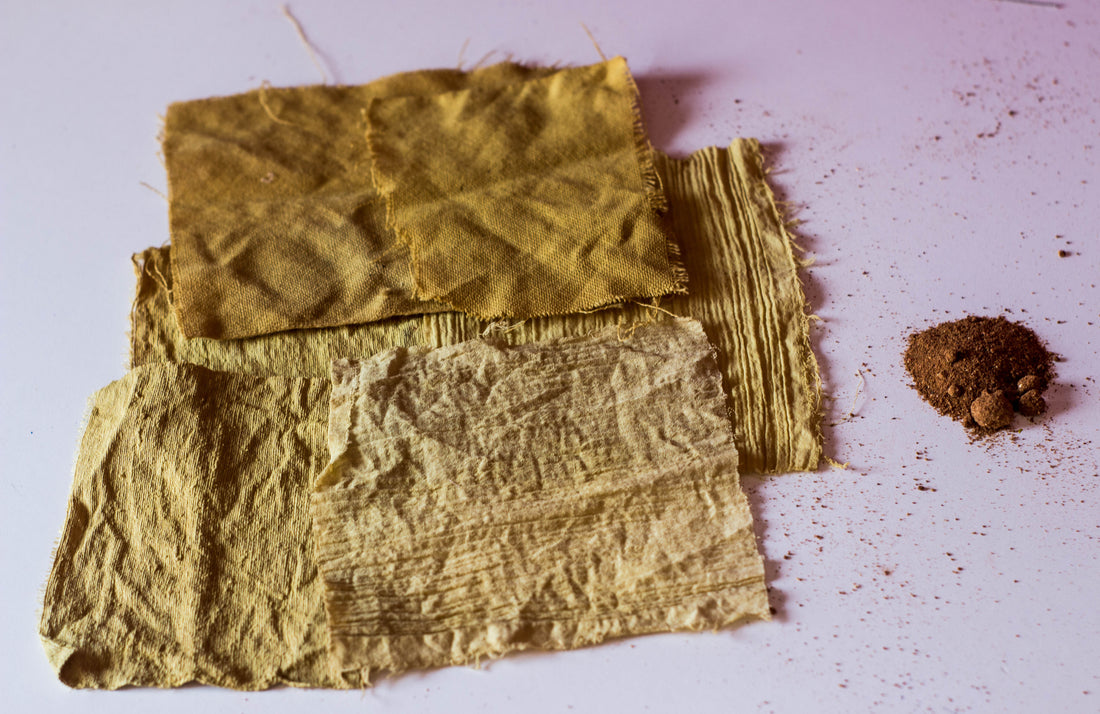
How to mordant protein fibres (Wool, Silk)
Natural dyeing is a wonderful way to add color to your fabrics and yarns without the use of synthetic dyes. However, if you want to achieve long-lasting and bright colors, you need to properly prepare your materials by mordanting them. Mordanting is the process of treating the fibers with a substance that will help the dye to bond to them, making the color more durable and vibrant. In this article, we will focus on how to mordant protein fibers like wool and silk.
What is Mordanting?
Mordanting is a crucial step in natural dyeing. When you dye your materials, the color needs to bond with the fibers to create a lasting and vibrant effect. Mordants are substances that help the dye to bond with the fibers. They can also alter the color of the final product. The most common mordants used for protein fibers are alum and cream of tartar.
Preparing the Fiber
Before you start mordanting, you need to prepare your fiber. The first step is to wash it thoroughly to remove any dirt, oils, or other substances that may interfere with the mordanting process. Once your fiber is clean, weigh it to determine how much mordant you need to use. You will need to use approximately 10% of the weight of the fiber in potassium alum and 5% of the weight of the fiber in cream of tartar.
Mordanting Wool
To mordant wool, you will need a stainless steel pot, a wooden spoon, a glass jar, gloves, and a facemask. Here is the step-by-step process:
-
Fill your stainless steel pot with enough water to cover your wool.
-
Add the potassium alum and cream of tartar to the pot and stir until the mordant is fully dissolved.
-
Add your wool to the pot and stir gently to ensure that the mordant is evenly distributed.
-
Turn on the heat and gradually bring the pot to a temperature of around 180°F (82°C). Be sure to stir the wool regularly to prevent it from sticking to the bottom of the pot.
-
Once the pot has reached the desired temperature, turn off the heat and let it cool. Leave the wool in the pot for at least 12 hours, or overnight.
-
After the wool has soaked in the mordant for the appropriate amount of time, remove it from the pot and rinse it thoroughly with cool water.
-
Gently squeeze the wool to remove any excess water, but do not wring it out.
-
Hang the wool to dry completely, away from direct sunlight.
Mordanting Silk
To mordant silk, you will need a stainless steel pot, a wooden spoon, a glass jar, gloves, and a facemask. Here is the step-by-step process:
-
Fill your stainless steel pot with enough water to cover your silk.
-
Add the potassium alum and cream of tartar to the pot and stir until the mordant is fully dissolved.
-
Add your silk to the pot and stir gently to ensure that the mordant is evenly distributed.
-
Turn on the heat and gradually bring the pot to a temperature of around 160°F (71°C). Be sure to stir the silk regularly to prevent it from sticking to the bottom of the pot.
-
Once the pot has reached the desired temperature, turn off the heat and let it cool. Leave the silk in the pot for at least 12 hours, or overnight.
-
After the silk has soaked in the mordant for the appropriate amount of time, remove it from the pot and rinse it thoroughly with cool water.
-
Gently squeeze the silk to remove the excess water, but avoid wringing or twisting it, as this can damage the delicate fibers. Hang the silk to dry in a well-ventilated area, away from direct sunlight.
Once the silk is completely dry, it is ready to be dyed. The mordant will help the silk fibers to bond with the dye molecules, resulting in a more vibrant and long-lasting color. Keep in mind that the exact shade of the final color will depend on a variety of factors, including the type of dye used, the length of time the silk is left in the dye bath, and the pH of the water.
In conclusion, mordanting protein fibers like wool and silk is an essential step in the natural dyeing process. Mordants help to bind the dye molecules to the fibers, resulting in more vibrant and long-lasting colors. Potassium alum and cream of tartar are two commonly used mordants for protein fibers, and they can be easily obtained from online retailers or specialty dye suppliers. By following the steps outlined above, you can mordant your wool and silk fabrics with confidence, knowing that you are setting the stage for beautiful and long-lasting colors.